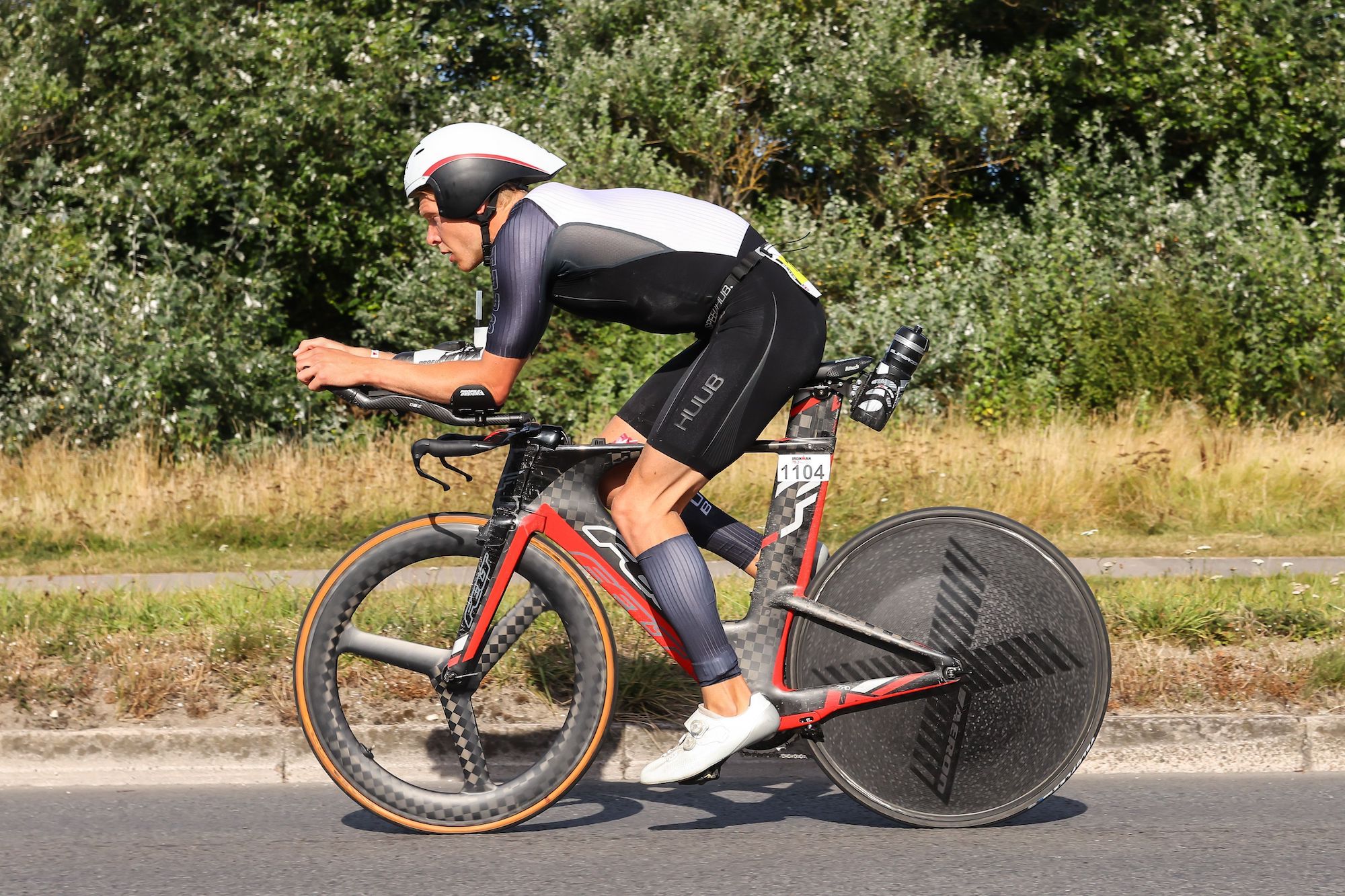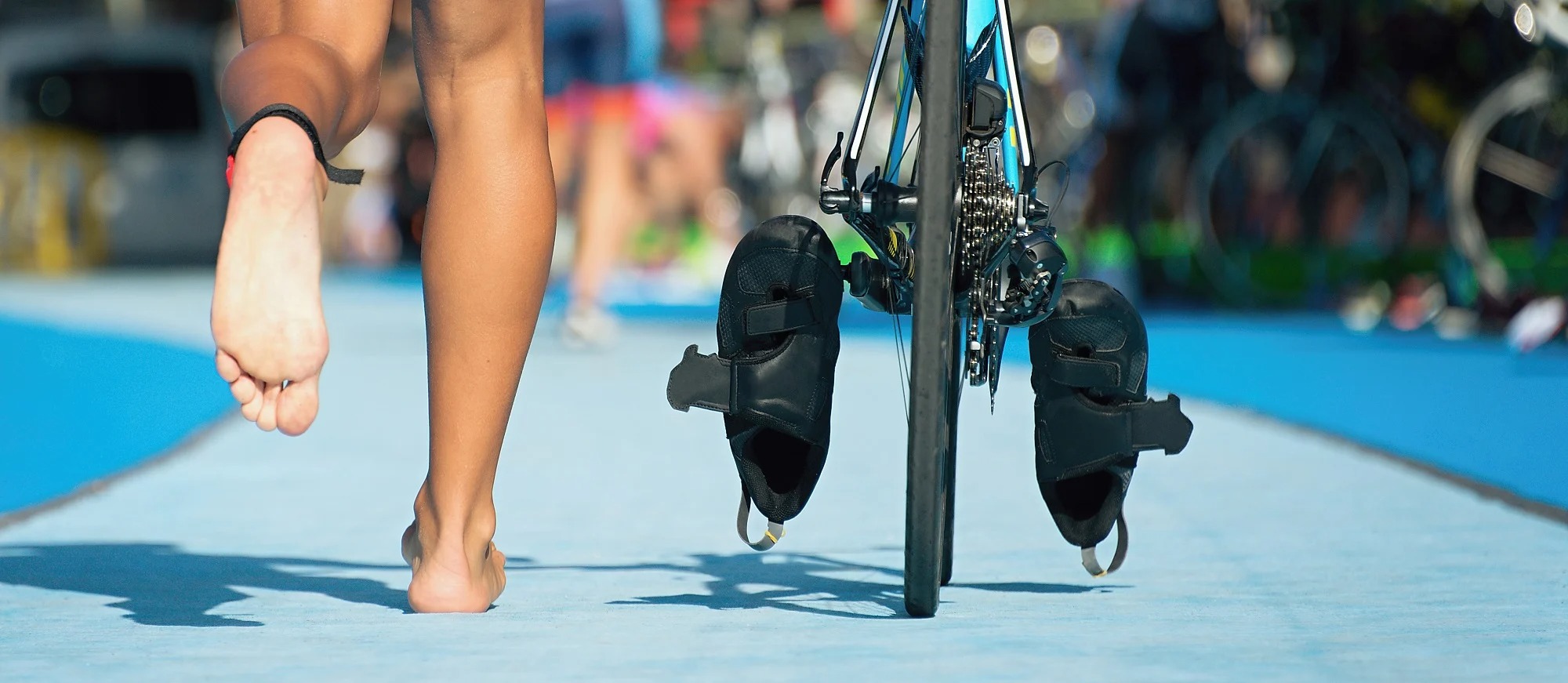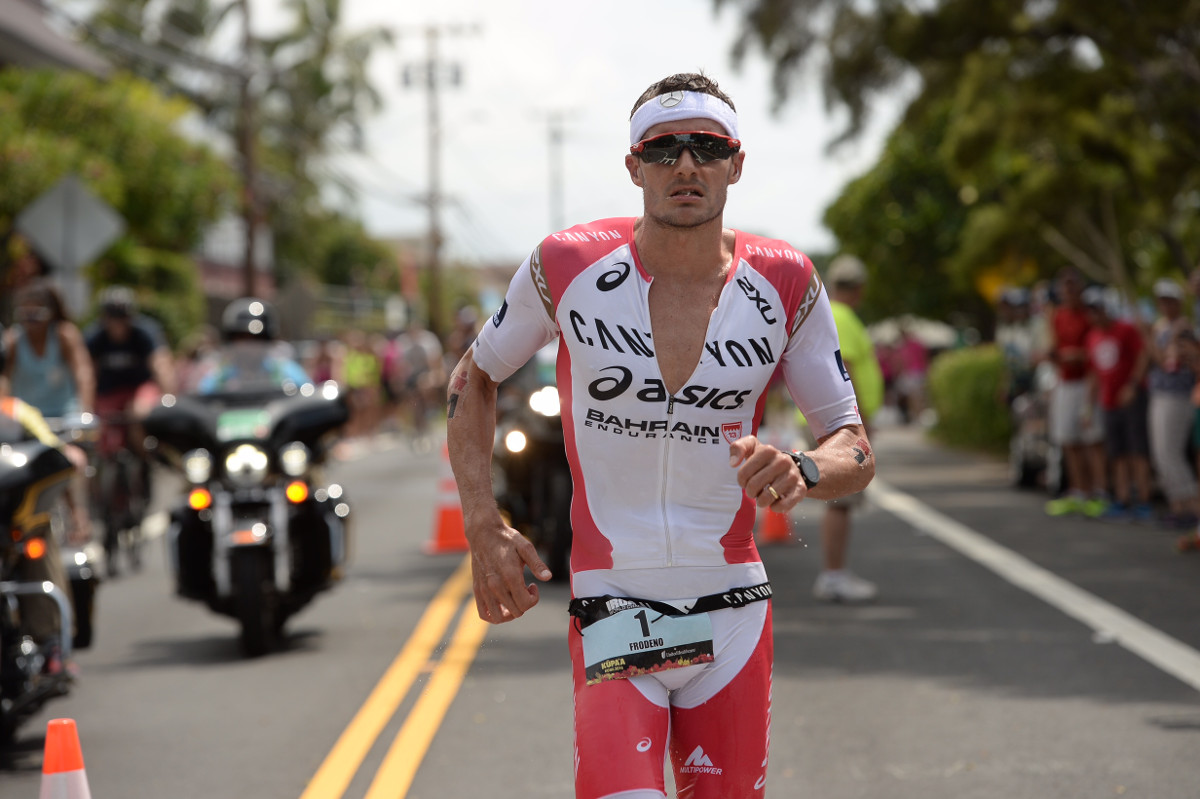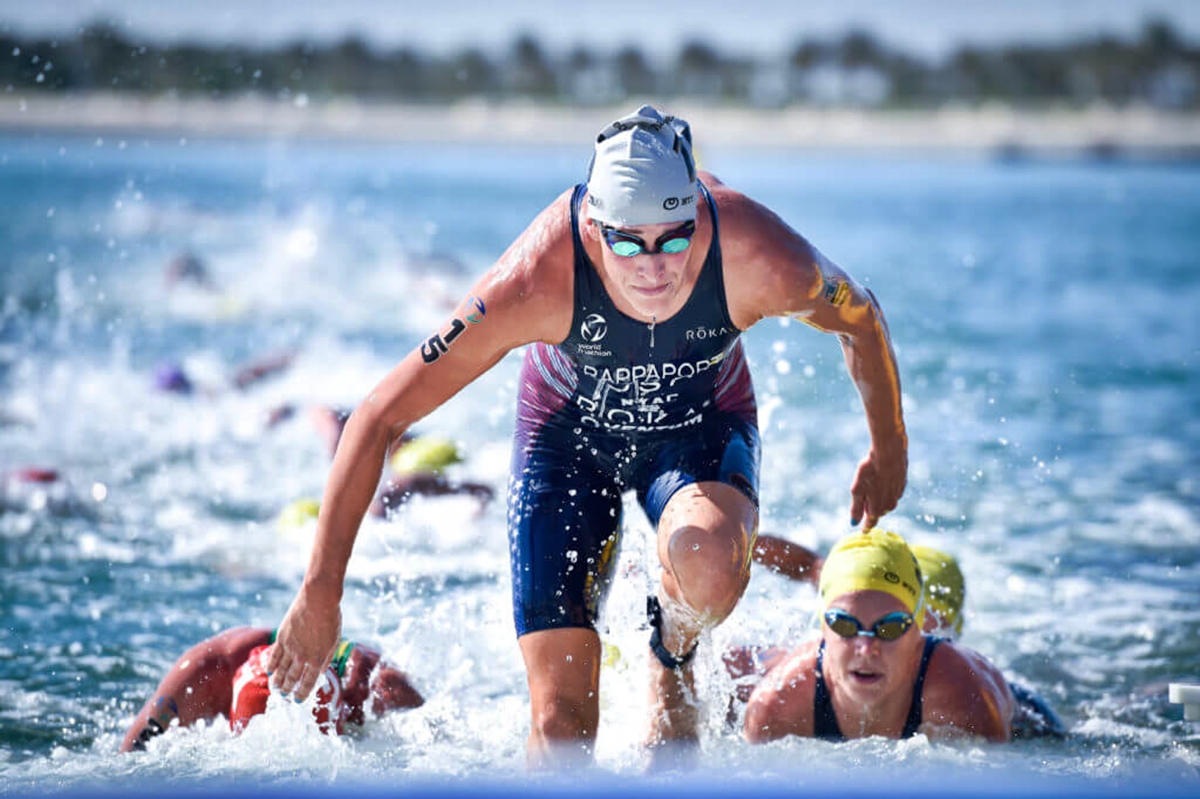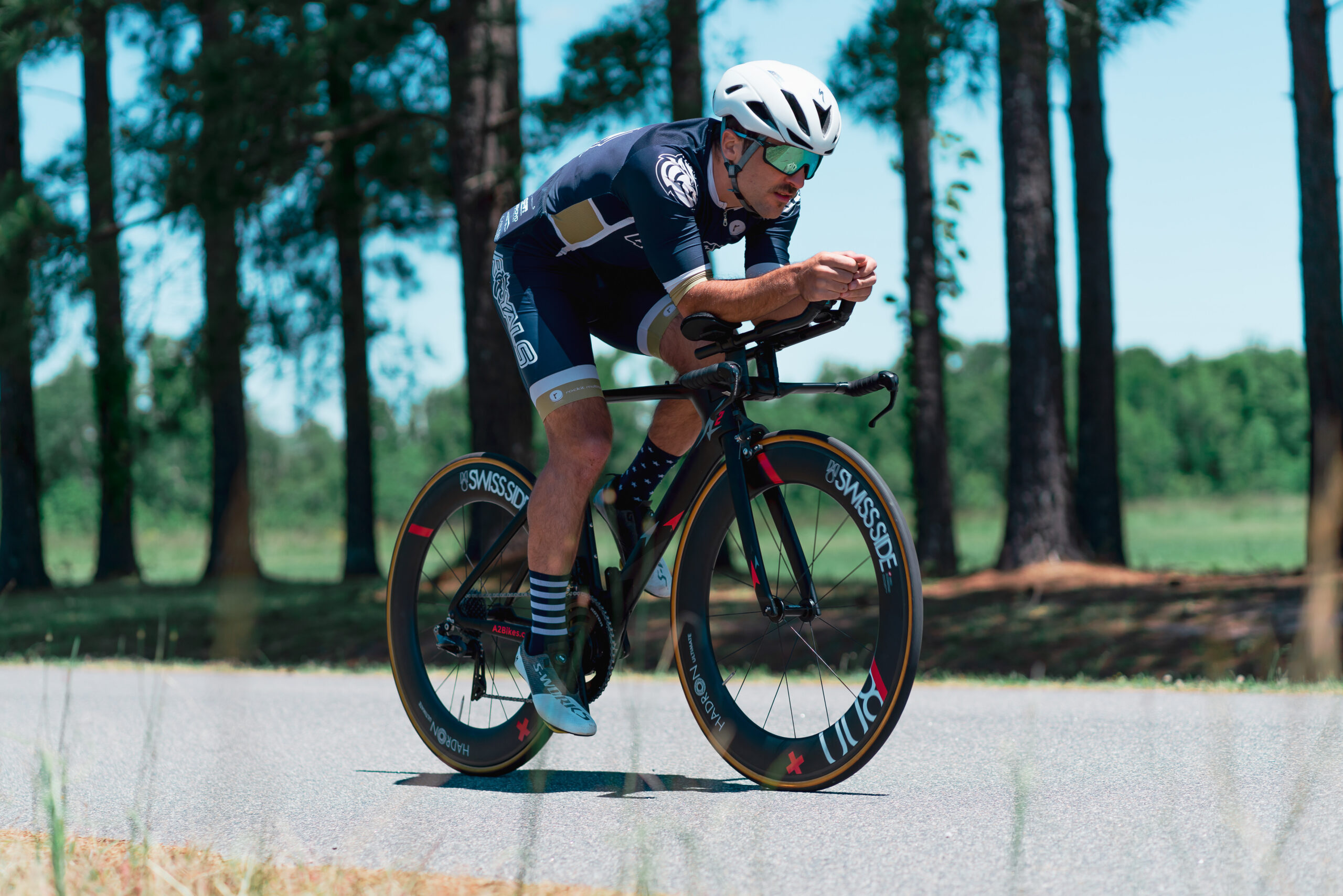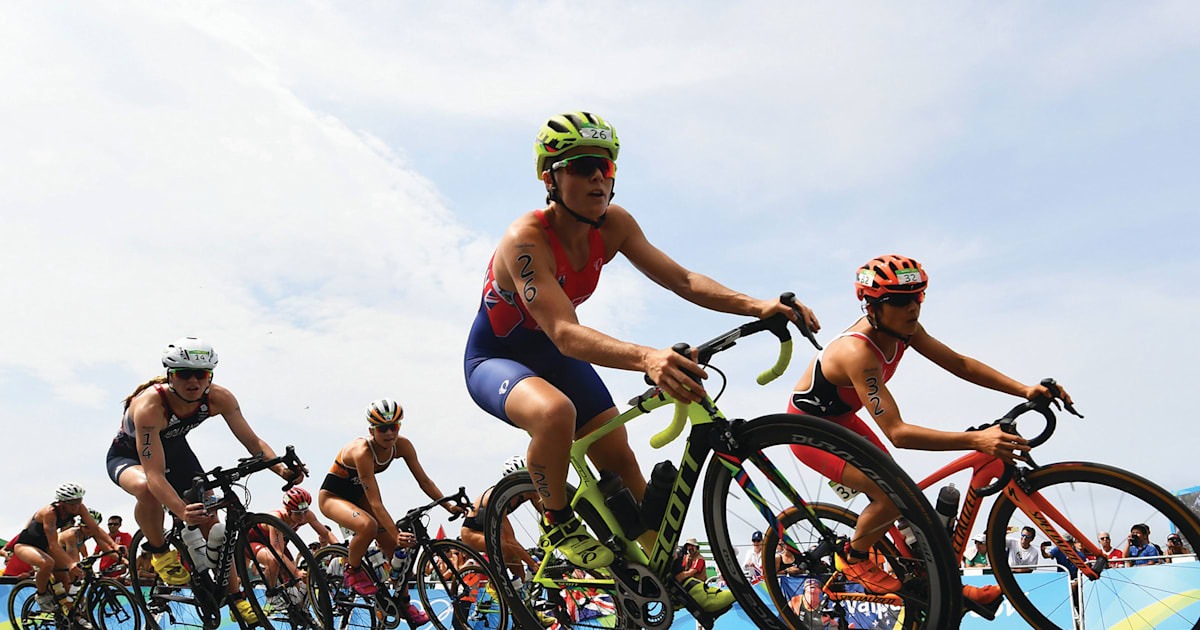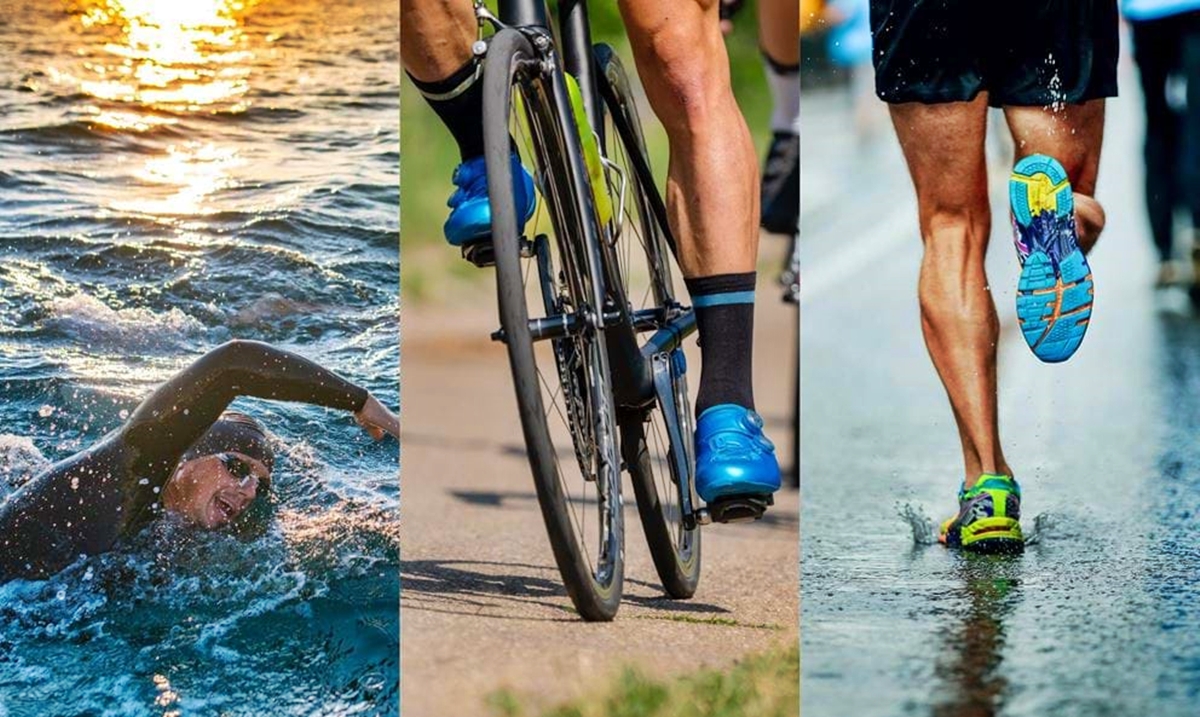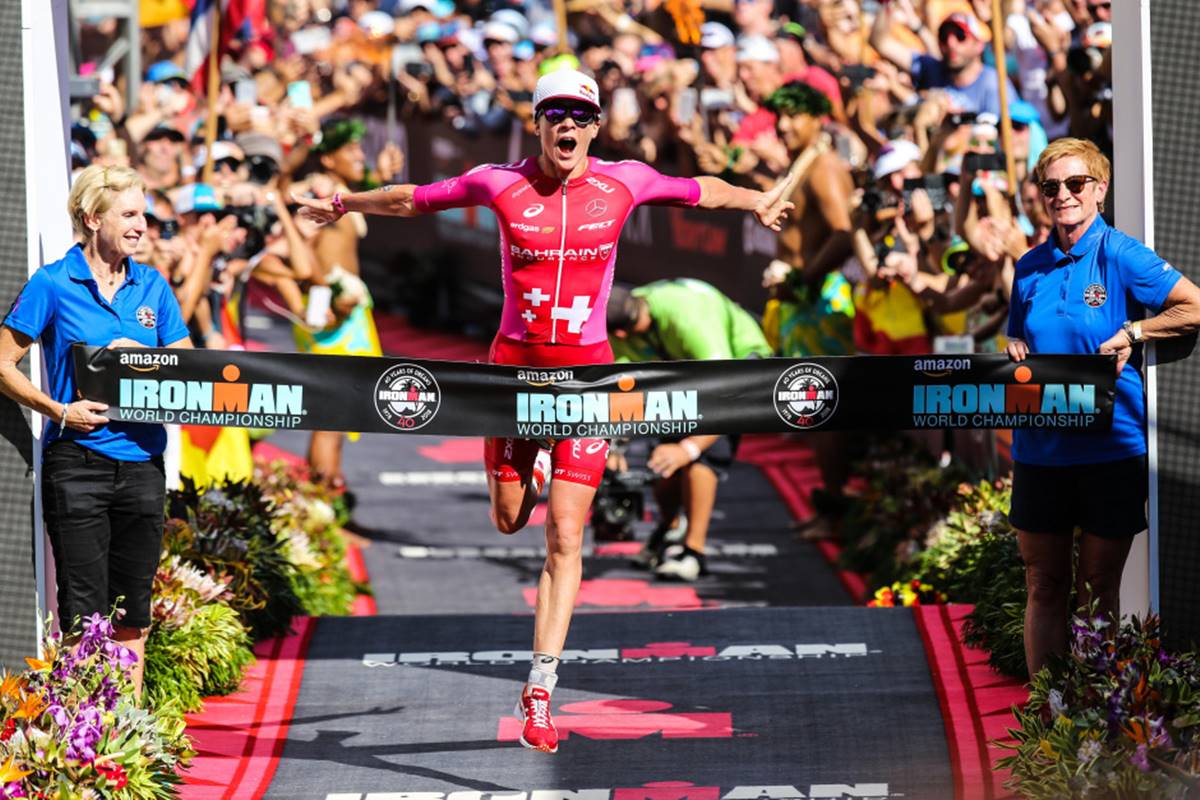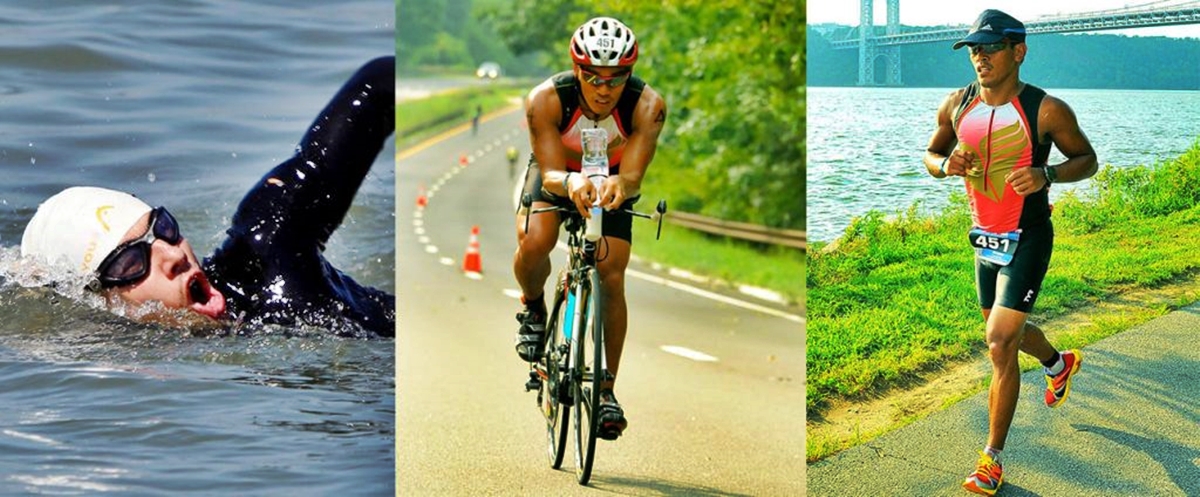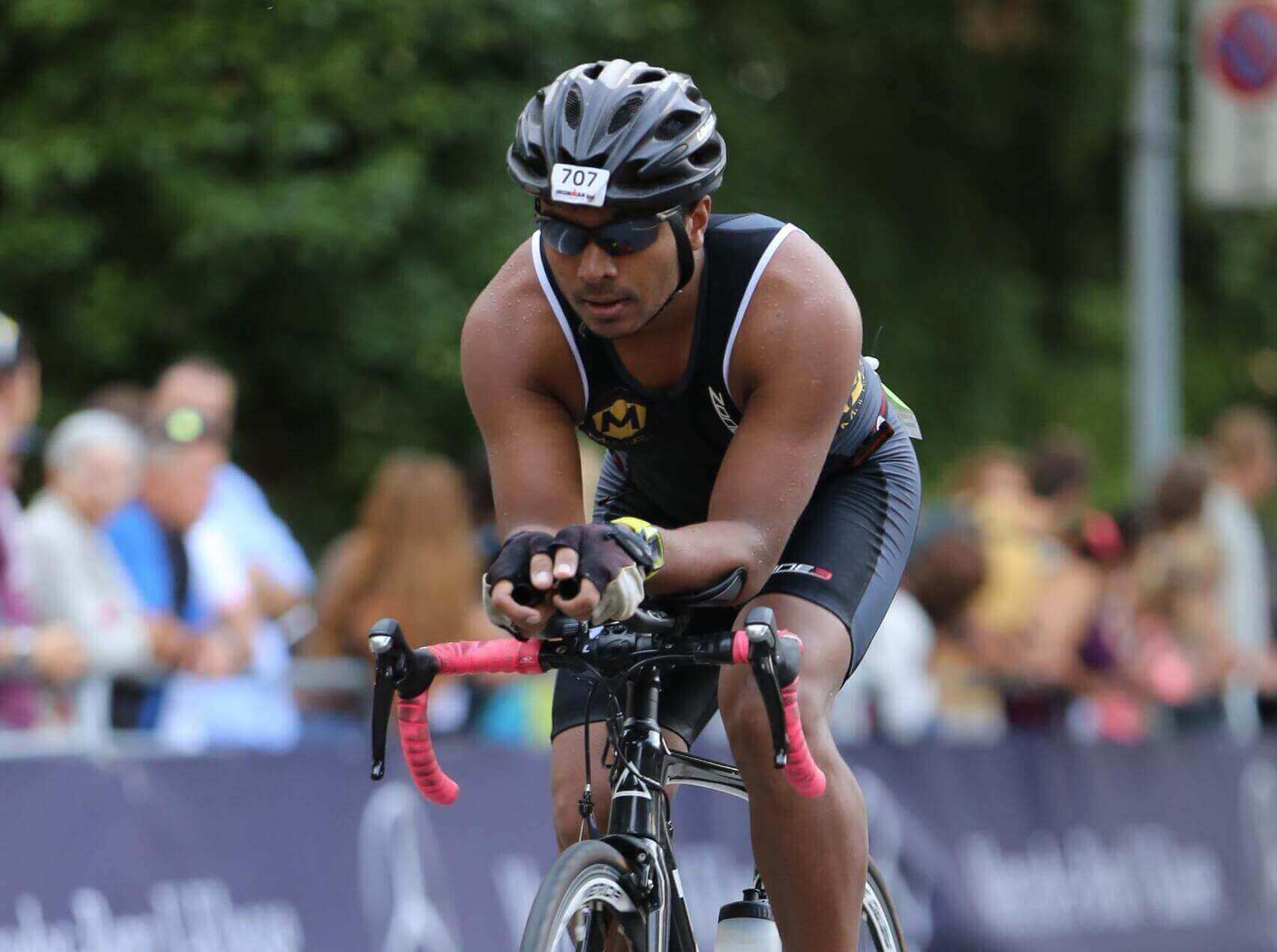

Featured
How Much Is The Ironman Triathlon
Modified: January 22, 2024
Discover the cost of participating in the iconic Ironman Triathlon event, and find out why it is a featured endurance race loved by athletes worldwide.
Introduction
The Ironman Triathlon is one of the most prestigious and challenging endurance races in the world. It is not just a test of physical fitness, but also mental strength and determination. This iconic event pushes athletes to their limits as they swim, bike, and run their way to the finish line.
First held in 1978 on the island of Oahu, Hawaii, the Ironman Triathlon has since grown into a global phenomenon, with races taking place in various locations around the world. The name “Ironman” was inspired by a discussion among a group of Navy SEALs who debated which athletic events were the most challenging. They combined the three toughest endurance races at the time – the Waikiki Roughwater Swim, the Oahu Bike Race, and the Honolulu Marathon – to create the ultimate test of endurance.
Since its inception, the Ironman Triathlon has attracted participants from all walks of life – from professional athletes to dedicated amateurs seeking to challenge themselves. The distinctive Ironman logo, a bold M-dot symbolizing the fusion of the three disciplines, has become a symbol of achievement and determination.
What sets the Ironman Triathlon apart from other endurance races is its unique combination of distances. Participants must complete a 2.4-mile (3.86 km) open-water swim, followed by a grueling 112-mile (180.25 km) bike ride, and then finish with a full marathon run of 26.2 miles (42.2 km). It’s a true test of physical stamina, mental toughness, and the ability to endure intense physical exertion over an extended period of time.
But the Ironman Triathlon is not just about crossing the finish line. It’s about the journey, the countless hours of training and preparation leading up to the race. Athletes must commit themselves to months, sometimes even years, of training, carefully balancing their workouts and focusing on endurance, strength, and speed in each discipline.
In this article, we will explore the history of the Ironman Triathlon, the distances required to complete the race, the training needed to prepare for it, the equipment required, and the costs associated with participating in this epic endurance event. Whether you’re a seasoned triathlete or someone considering taking on this incredible challenge, we hope to provide you with all the information you need to understand and appreciate the Ironman Triathlon.
History of Ironman Triathlon
The history of the Ironman Triathlon dates back to February 18, 1978, when the first race took place on the island of Oahu, Hawaii. The event was conceived by naval officer John Collins and his wife Judy, who wanted to settle an argument about which athletes were the fittest – swimmers, cyclists, or runners.
The inaugural race was called the “Hawaiian Ironman Triathlon,” and it featured 15 participants who took on the challenge of completing a 2.4-mile (3.86 km) swim, followed by a 112-mile (180.25 km) bike ride, and finally, a full marathon run of 26.2 miles (42.2 km). The race was not organized as a competition, but rather as a personal challenge to each participant.
Gordon Haller, a United States Navy Communications Specialist, became the first-ever Ironman champion, completing the course in 11 hours, 46 minutes, and 58 seconds. The race garnered attention and interest, leading to the establishment of the Ironman as an annual event.
The following year, the race moved from Oahu to the Big Island of Hawaii, specifically to the town of Kailua-Kona. This location has remained the home of the Ironman World Championship ever since.
In 1981, the race introduced the concept of qualifying for the Ironman World Championship. The top finishers in designated qualifying events were invited to compete in the prestigious Ironman race in Kona. This system has been in place ever since, creating a competitive environment and adding to the event”s allure.
Over the years, the Ironman Triathlon grew in popularity and attracted more participants from around the world. It also underwent changes to the distances for each discipline. In 1983, the swim was adjusted to the current 2.4-mile distance, and the bike ride extended to 112 miles. The marathon distance remained untouched.
Today, the Ironman Triathlon has become a global phenomenon, with races held in various locations across the globe. The Ironman World Championship in Kona remains the pinnacle event and is widely considered the most prestigious endurance race in the world.
The history of the Ironman Triathlon is a testament to the human spirit of endurance, determination, and the pursuit of personal challenges. It has inspired countless individuals to push their limits and embrace the philosophy that anything is possible with dedication and hard work.
The Ironman Triathlon Distances
The Ironman Triathlon is renowned for its challenging and grueling distances, designed to test the physical and mental limits of participants. Consisting of three disciplines – swimming, cycling, and running – let’s take a closer look at the distances required to complete an Ironman Triathlon.
The first leg of the race is the swim, which covers a distance of 2.4 miles (3.86 km). It takes place in open water, often in lakes, rivers, or oceans, depending on the race location. Competitors must navigate through waves, currents, and sometimes challenging weather conditions. The swim can be a daunting start to the race, demanding both physical endurance and mental focus.
Next is the bike segment, which is a grueling 112-mile (180.25 km) ride. Athletes switch from swimming to cycling, transitioning their bodies from the water to the bike saddle. This portion of the race requires not only physical strength but also tactical planning, as participants must pace themselves to conserve energy for the remaining run. The bike course may include challenging terrain, steep climbs, and descents, putting participants’ biking skills to the test as they cover the long distance.
Finally, it’s time for the marathon run, which completes the triathlon. Participants must run a full 26.2 miles (42.2 km) after already completing the swim and bike portions. The run can be the most mentally challenging leg of the race, testing the endurance and perseverance of the athletes. It requires physical stamina to overcome fatigue and push through the pain, often enlisting mental tricks and strategies to stay motivated – mile by mile, step by step, until they reach the finish line.
Combined, the three disciplines make up the Ironman Triathlon, known for its demanding and epic distances. The race pushes competitors to their limits, requiring not only physical fitness but also mental fortitude and the ability to endure the grueling challenges that lie ahead.
It’s important to note that while the Ironman Triathlon distances are standardized across most events, there are variations in other long-distance triathlon races. For example, the Half Ironman, also known as Ironman 70.3, includes a 1.2-mile (1.9 km) swim, a 56-mile (90.1 km) bike ride, and a half marathon run of 13.1 miles (21.1 km). These races, though still demanding, provide a slightly less daunting challenge for those looking to test their endurance on a smaller scale.
Participating in an Ironman Triathlon requires months of dedicated training, mental preparation, and a deep commitment to pushing oneself to the limit. Athletes who successfully complete an Ironman Triathlon can proudly say they have conquered one of the most challenging endurance races in the world.
Training for an Ironman Triathlon
Training for an Ironman Triathlon requires a well-structured and disciplined approach to build the necessary endurance, strength, and mental resilience to successfully complete the race. It is a long and arduous journey that typically spans several months, involving a combination of swimming, cycling, and running workouts.
One of the key aspects of Ironman training is gradually increasing the volume and intensity of workouts over time. This progressive overload helps the body adapt to the demands of the race and minimizes the risk of injury. Training plans typically consist of multiple sessions per week in each discipline, as well as strength training and recovery sessions.
Swimming is the first discipline of the race, and it is crucial to develop proper swim technique and endurance. Regular swim sessions focus on building technique, speed, and distance. Open water swims are also incorporated to simulate race conditions and prepare athletes for challenges such as sighting and swimming in a crowded field.
Cycling plays a significant role in Ironman training, as it covers the longest distance in the race. It is essential to build both endurance and strength on the bike through long rides, hill repeats, and interval training. Athletes also work on their bike-handling skills, maintaining an aerodynamic position, and practicing nutrition and hydration strategies during longer rides.
The marathon run is the final leg of the triathlon, and training for it involves building endurance and running efficiency. Long runs, tempo runs, and interval training help improve aerobic capacity, speed, and mental toughness. It is crucial to gradually increase the distance and intensity of runs, simulating race conditions through brick workouts – combining a bike ride immediately followed by a run to simulate the transition between the bike and run segments.
In addition to the three disciplines, strength training is an important component of Ironman training. It helps prevent injuries, improves overall body strength, and supports better performance in each discipline. Strength training exercises focus on core stability, leg and upper body strength, and flexibility. Cross-training activities, such as yoga or Pilates, can also be beneficial in improving flexibility and reducing the risk of overuse injuries.
Throughout the training process, recovery is critical. Adequate rest days and sufficient sleep allow the body to repair and adapt to the physical stress of training. Nutrition and hydration are also essential for maintaining energy levels and supporting recovery. A balanced diet, including a mix of carbohydrates, proteins, and healthy fats, helps fuel workouts and optimize performance.
It is recommended to work with a coach or follow a structured training plan to ensure proper progression and avoid overtraining. A coach can provide guidance, monitor progress, and make adjustments to the training program as needed. They can also provide valuable insights and support during the challenging moments of the journey.
Training for an Ironman Triathlon is a monumental undertaking that requires time, dedication, and commitment. With consistent and focused training, athletes can build the physical and mental resilience needed to conquer the race and achieve their Ironman goals.
Equipment Needed for an Ironman Triathlon
Participating in an Ironman Triathlon requires the use of specific equipment to ensure a safe and successful race. From swim gear to cycling equipment and running essentials, let’s explore the equipment needed for an Ironman Triathlon.
Swimming is the first discipline of the race, and having the right swim gear is crucial. A well-fitting wetsuit is recommended for most triathlon swims, providing buoyancy and insulation in open water. Goggles that offer comfort, a good fit, and clear visibility are essential. A swim cap is often provided by the race organizers and helps with visibility in the water.
For the cycling portion of the race, a reliable road or triathlon bike is required. The bike should be properly serviced and in good working condition. Triathlon-specific bikes are designed to be aerodynamic, helping to reduce drag and improve speed. A bike helmet that meets safety standards is mandatory, and it’s important to choose a comfortable and well-fitting helmet. Cycling shoes, with cleats that attach to the pedals, improve pedaling efficiency and power transfer.
Running is the final leg of the triathlon, and comfortable running shoes are vital. It is recommended to choose running shoes that provide the right level of support and cushioning for your individual needs. Your shoes should be broken in before the race to reduce the risk of blisters and discomfort. Moisture-wicking socks can help keep your feet dry and minimize friction.
In addition to the discipline-specific equipment, there are a few important items that are required throughout the race. A comfortable and well-fitting triathlon suit or race kit is often worn during the entire event. This one-piece or two-piece outfit is designed to be quick-drying and comfortable for swimming, cycling, and running. Triathlon-specific sunglasses are beneficial to protect the eyes from the sun, wind, and debris, while also enhancing visibility.
Nutrition and hydration are crucial during an Ironman Triathlon. Fueling options include energy gels, sports drinks, and snacks that provide a balance of carbohydrates, proteins, and electrolytes. It is essential to have a reliable nutrition plan and practice using it during training to avoid any surprises on race day. A handheld water bottle or hydration pack can help ensure adequate hydration throughout the race.
Additional equipment may include a transition bag to organize and transport gear during the race, such as extra clothing, a towel, sunscreen, and personal items. A bike repair kit, including spare inner tubes, tire levers, and a multitool, is essential for any potential mechanical issues during the bike leg. Lastly, a waterproof watch or sports tracking device can be useful for monitoring and pacing your performance during the race.
It’s important to note that the equipment requirements may vary depending on the race and race regulations. It’s essential to review the specific guidelines provided by the race organizers to ensure compliance with the equipment rules.
Preparing and organizing the necessary equipment well in advance of the race allows athletes to focus on their performance and enjoy the journey of the Ironman Triathlon. By having the right gear and equipment, participants can enhance their comfort, safety, and overall race experience.
Costs of Participating in an Ironman Triathlon
Participating in an Ironman Triathlon is not only a test of endurance but also a financial commitment. The costs associated with training, registration fees, travel, accommodation, and equipment can add up. Let’s explore the various expenses involved in participating in an Ironman Triathlon.
Registration fees for an Ironman Triathlon can range from a few hundred to several thousand dollars, depending on the location and popularity of the race. Early registration discounts may be available, but it’s important to plan ahead as spots tend to fill up quickly. These fees cover the cost of organizing the race, providing support stations, safety measures, and race swag.
Training for an Ironman Triathlon involves a significant time commitment. Many athletes choose to work with a coach or join a training group, which may come with additional costs. Coaches provide personalized training plans, guidance, and support throughout the preparation process. Training group fees may include access to group workouts, clinics, and coaching assistance.
Travel expenses can make up a substantial portion of the overall costs. Participants often have to travel to the race location, which may require airfare, transportation, and accommodation expenses. The cost of accommodation can vary depending on the race location, time of year, and proximity to the race venue. It’s recommended to book accommodations well in advance to secure the best rates.
Equipment is another significant expense for participants. A high-quality triathlon bike, wetsuit, running shoes, and other required gear can come with a considerable price tag. It’s essential to invest in equipment that fits properly and meets individual needs. Additionally, there may be ongoing costs for bike maintenance, gear upgrades, and replenishing nutrition and hydration supplies.
Insurance coverage is also an important consideration. While not mandatory, it is highly recommended to have comprehensive health insurance to cover any potential accidents or injuries during training or on race day. Travel insurance may also be advisable to provide coverage for travel-related emergencies or cancellations.
Aside from these direct costs, participants often incur additional expenses for training-related services such as sports massages, physiotherapy, and sports nutrition consultations. These services can help optimize performance, prevent injuries, and enhance overall well-being during the intense training period.
It’s important to budget and plan ahead to cover the costs associated with participating in an Ironman Triathlon. Many athletes seek sponsorship or support from family, friends, or local businesses to offset some of these expenses. The rewards and sense of accomplishment that come from completing an Ironman Triathlon are invaluable to many, making the investment a worthwhile one.
Ultimately, the costs of participating in an Ironman Triathlon are not solely financial. They also involve time, dedication, and sacrifices. However, many athletes find that the experience and personal growth gained from this monumental endurance event are priceless.
Sponsorship and Financial Support
Participating in an Ironman Triathlon can be a significant financial undertaking, but for many athletes, sponsorship and financial support can help offset some of the costs. Securing sponsorships and financial assistance can not only provide financial relief but also offer a sense of validation and recognition for the athlete’s dedication and commitment. Let’s explore the various avenues for sponsorship and financial support in the world of Ironman Triathlon.
One of the primary ways athletes seek sponsorship is by partnering with companies and brands that align with their values and goals. These sponsorship agreements often provide athletes with financial support, as well as access to specialized gear, equipment, and nutritional products. Companies may offer product discounts, equipment sponsorship, or financial contributions to help cover some of the expenses associated with training and racing.
Athletes can reach out to local businesses, sportswear companies, fitness brands, and other relevant sponsors to present their case and seek sponsorship opportunities. Having a compelling story, a strong social media presence, and an engaged following can add value to an athlete’s sponsorship potential. It’s important to showcase the benefits of sponsorship, such as brand visibility and exposure to a dedicated and passionate audience.
Some athletes also use crowdfunding platforms to raise funds for their Ironman Triathlon journey. Websites such as GoFundMe or Kickstarter allow athletes to create campaigns and share their story, inviting friends, family, and supporters to contribute financially. Crowdfunding can be a way to involve the community and receive support from a broader network of individuals who are inspired by the athlete’s dedication and determination.
In addition to corporate sponsorships and crowdfunding, athletes may seek financial support through grants, scholarships, or awards specifically designed for triathletes. These opportunities can provide financial assistance and recognition to deserving athletes who demonstrate talent, dedication, and a commitment to their sport.
It’s important for athletes to actively engage with their sponsors and demonstrate value. This may involve wearing sponsored gear during races, sharing endorsements on social media, and providing updates on training and race results. Building a strong relationship with sponsors can lead to ongoing support and future opportunities.
Financial support can also come from friends, family, and the local community. Athletes may organize fundraising events, such as charity dinners, bake sales, or fitness classes, to raise funds for their journey. This not only helps with financial assistance but also allows athletes to involve their support network in their training and racing experience.
While sponsorship and financial support can alleviate some of the financial burdens associated with participating in an Ironman Triathlon, it’s important to remember that dedication, hard work, and passion are essential aspects of the journey. Athletes should pursue sponsorship and financial assistance with a mindset of gratitude and a commitment to representing their sponsors and supporters in the best possible way.
By seeking sponsorship and financial support, athletes can focus more on their training, preparation, and performance, allowing them to fully immerse themselves in the incredible experience of participating in an Ironman Triathlon.
Prize Money in Ironman Triathlon
Ironman Triathlon competitions are known for their immense physical and mental challenges, but they also offer the potential for athletes to earn prize money. While the amount of prize money varies depending on the race and specific event, let’s explore how athletes can earn prize money in the world of Ironman Triathlon.
The Ironman Triathlon World Championships, held annually in Kailua-Kona, Hawaii, offers one of the largest prize purses in the sport. The total prize money is typically in the hundreds of thousands of dollars, attracting top professional triathletes from around the world. The prize purse is distributed among the top finishers, with larger sums awarded to the first-place winners in both the men’s and women’s divisions.
In addition to the overall prize money, there may be specific prize categories, such as the first-place age group finishers. Age group competitors compete against others in their age category, providing an opportunity for amateur athletes to earn prize money as well.
Outside of the World Championship event, some Ironman Triathlon races offer prize money, although the amounts are generally lower compared to the pinnacle event in Kona. These races typically distribute prize money to the top professional finishers, with varying amounts based on the race’s prestige and financial capacity.
It’s important to note that earning prize money in Ironman Triathlon requires exceptional talent, commitment, and the ability to compete at an elite level. Professional athletes dedicate their lives to training, racing, and maintaining peak physical and mental condition. They invest countless hours in their craft and carefully plan their racing calendar to maximize their potential for earning prize money.
For professional triathletes, prize money is crucial as it provides income to offset training and living expenses. It helps cover the costs of travel, coaching, equipment, and training camps. The ability to earn a living through prize money allows professional athletes to focus on their sport full-time and pursue their athletic dreams.
While the financial rewards in Ironman Triathlon can be significant for top-tier athletes, it’s important to recognize that the majority of participants do not earn prize money. Many athletes compete for personal satisfaction, the challenge of completing the race, and the sense of accomplishment in pushing their own limits.
Ironman Triathlon is a sport that embraces the spirit of perseverance and self-improvement, regardless of prize money. Athletes find fulfillment in the process of training, the camaraderie with fellow competitors, and the personal growth that comes from conquering a challenging race.
Ironman Triathlon continues to inspire athletes worldwide, both professional and amateur, to push their boundaries and pursue their dreams. While prize money adds an extra layer of motivation and rewards to the sport, it is the passion, determination, and unwavering spirit that truly embody the essence of Ironman Triathlon.
Conclusion
The Ironman Triathlon is a true test of physical and mental strength, pushing athletes to their limits as they swim, bike, and run their way to the finish line. With its origins in Hawaii in 1978, the Ironman Triathlon has grown into a global phenomenon, attracting participants from all walks of life who seek to challenge themselves and demonstrate incredible feats of human endurance.
Throughout this article, we have explored various aspects of the Ironman Triathlon, including its history, the grueling distances of the race, the training required to prepare for it, the necessary equipment, and the financial considerations involved.
The history of the Ironman Triathlon showcases the determination and vision of its founders, who sought to create the ultimate test of endurance by combining swimming, cycling, and running into one monumental race. Over the years, the Ironman Triathlon has evolved and gained worldwide recognition, becoming a symbol of physical prowess and mental fortitude.
The Ironman Triathlon distances, consisting of a 2.4-mile swim, a 112-mile bike ride, and a full marathon run, require athletes to train meticulously and develop the necessary endurance, strength, and mental resilience to tackle the challenges that lie ahead. Training for an Ironman Triathlon is a long and disciplined journey, often involving months of hard work, dedication, and careful planning.
Additionally, participating in an Ironman Triathlon comes with financial costs. Registration fees, travel expenses, equipment, and training-related services can add up. Athletes often seek sponsorship, financial support, or explore crowdfunding options to help alleviate some of the financial burdens and make their dreams of competing in an Ironman Triathlon a reality.
While only a select few athletes earn prize money in Ironman Triathlon, the opportunity to compete and complete the race is a reward in itself. Ironman Triathlon embodies the spirit of endurance, perseverance, and personal growth, inspiring participants to push their boundaries and realize their own potential.
In conclusion, the Ironman Triathlon represents the ultimate test of physical and mental strength, demanding months of training, sacrifice, and dedication. It is an event that pushes athletes to their limits, while also providing an enriching and transformative experience. Whether driven by the desire to compete, achieve personal goals, or simply embrace the challenge, participating in the Ironman Triathlon offers a profound sense of accomplishment and the opportunity to join a community of individuals who share a passion for endurance and triumph.
